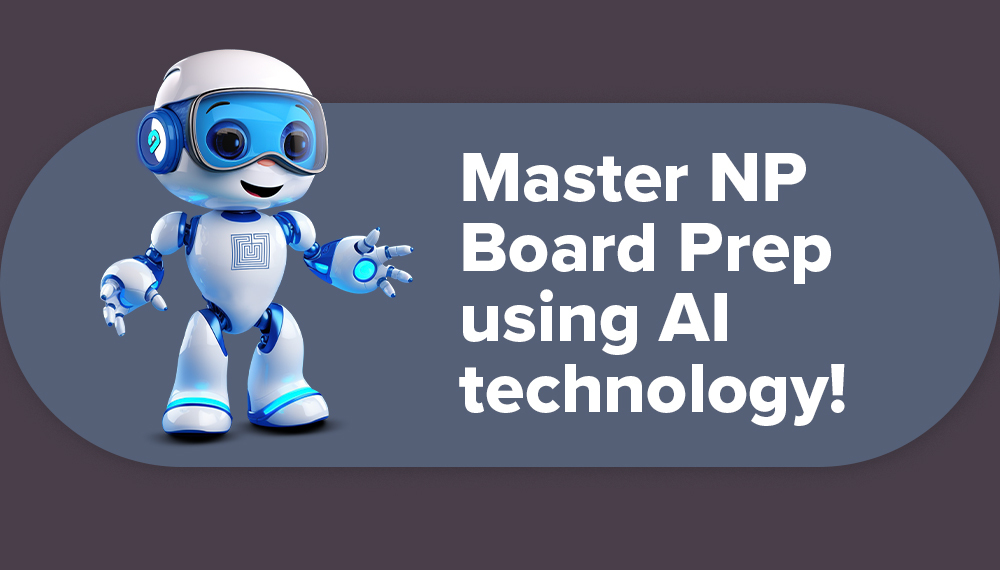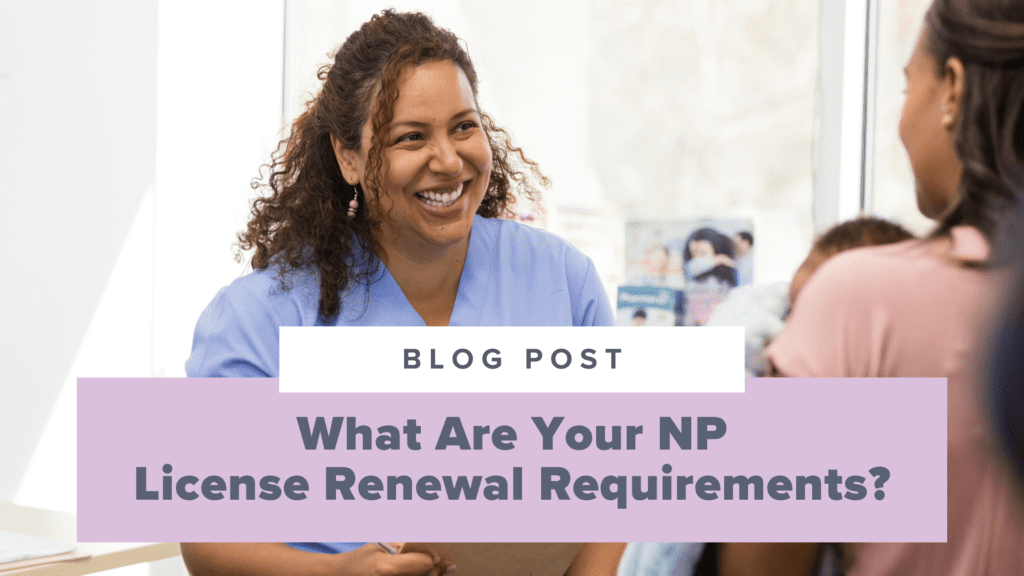Shadowing a Nurse Practitioner: Get a Glimpse of Your Future Role
- by
- Sep 25, 2023
- Articles

One of the most significant career transitions that a nurse can make is from the bedside to an advanced practice role. Advanced practice nursing as a nurse practitioner carries with it a lot of responsibility as an independent provider, but it can also be very rewarding!
Before you start working as a nurse practitioner, you first have to decide what your specialization will be. There are so many options! You can work in primary care with a specialization such as a Family Nurse Practitioner (FNP), Adult-Gerontological Primary Care Nurse Practitioner (AGPCNP), Psychiatric Mental Health Nurse Practitioner (PMHNP), Women’s Health Nurse Practitioner (WHNP), or Pediatric Nurse Practitioner (PNP) – just to name a few! If you really enjoy acute care, some options you can specialize in include an Adult-Gerontological Acute Care Nurse Practitioner (AGACNP), Pediatric Acute Care Nurse Practitioner (PNP-AC), or an Emergency Nurse Practitioner (ENP).
If you are undecided about what specialization track to choose, it is okay! One option to help with that decision is job shadowing. Job shadowing is a free, insightful, and non-binding way to build your confidence and explore NP career options. This simple step can help you discern career interests and realize that you, too, can succeed in the NP role!
How to Shadow a Nurse Practitioner
What is Job Shadowing?
Well, as the name suggests, you (an observer) remain in the shadow of a professional performing a specific job. If you are reading this article in hopes of learning how to shadow a nurse practitioner, the likely professional of interest to you is an NP who holds the minimum of a Master of Science in Nursing (MSN) degree and is board-certified in a certain specialty area. The duration of the shadowing experience ranges from a few hours to a full shift.
Finding the Right Mentor
The first step in arranging for a job shadowing experience is to find someone you think would be a good mentor. The best teachers are those who are supportive and encouraging, and who you could trust with a vulnerable question. For example, consider what it might feel like to report for your first shift as an NP student. Nerve-wracking, right? Of course it is, and that’s true for every NP student!
Veteran nurse practitioner preceptors know that and are ready to support you. They know you will come to the shadowing day or clinical shift with many questions that are customary for novices to ask. You want to observe and learn from someone you feel comfortable asking potentially embarrassing questions. You know, those questions that usually begin with “this is probably a stupid question, but…”
Making a Professional Resume That Will Impress an NP
Once you’ve identified an NP you feel comfortable shadowing, it is time to polish up your resume! Ensure that your name and credentials are clearly listed at the top of the document. Here are other content areas that professional NPs want to see on a resume:
- ✔️ Education (most recent degree earned at the top of the list)
- ✔️ Professional Work Experience (delete all high school or non-nursing positions; most recent position at the top of the list)
- ✔️ Licensure & Certifications (specialty certifications including RNC, CCRN, etc.)
- ✔️ Continuing Education (course completion associated with BLS, PALS, ACLS, etc.)
- ✔️ Professional Memberships (do you belong to any state or national associations? If not, join one! Many professional nursing associations offer student discounts on memberships!)
- ✔️ Cover Letter (include this as page one of your file and your resume as page two, then save it as a PDF to maintain consistency of the formatting)
Handing Your Resume to the NP You Want to Shadow
So, you’ve created a cover letter as page #1 of your file, with the resume listed on page #2 and you’ve saved it as a PDF document. Now what?
Time to make your next decision. Do you share a hard copy or just email them your cover letter and resume? While there is no absolute answer to this question, you should never underestimate the value of human connection. It is much easier to say no in an email than it is face-to-face! Don’t hesitate to reach out with a phone call after a few days of emailing your resume if you haven’t heard back yet.
Being Prepared for Shadowing Day
As the shadowing day approaches, create a list of personal learning objectives. Doing so will let you approach the experience with a mental checklist of desired observations and questions.
Here are some learning objectives to get you started:
For Primary Care NPs:
Identify the patient population that the NP manages:
- ✔️ Family medicine
- ✔️ Internal medicine
- ✔️ Outpatient specialty (cardiology, endocrine, orthopedics, etc.)
- ✔️ Mental health facility
- ✔️ Long-term care
- ✔️ Urgent care
Observe the “order of events” performed by the NP:
- ✔️ What does the schedule look like?
- ✔️ How long is a patient visit?
- ✔️ How many patients are typically seen in a day?
- ✔️ Is there specific administrative time for reviewing results and returning phone calls?
For Acute Care NPs:
Identify the patient population that the NP manages:
- ✔️ Hospital unit (med-surg, ICU, operating room)
- ✔️ Long-term acute care facilities
- ✔️ Emergency rooms
Observe the “order of events” performed by the NP:
- ✔️ What do the rounds look like?
- ✔️ Are there interdisciplinary meetings first?
- ✔️ Is there any prioritization for bedside rounds?
For Any NP Specialization:
Observe the professional and leadership behaviors of the NP:
- ✔️ Identify the expected collateral workload.
- ✔️ Are there departmental meetings?
- ✔️ Are there any committee meetings?
- ✔️ What are the expected patient care outcomes that are measured?
Discuss employer benefits:
- ✔️ Salary for new NPs
- ✔️ Full-time versus part-time schedules
- ✔️ Non-salary benefits (insurance, retirement, membership discounts, etc.)
- ✔️ Is there any orientation for new hires?
Discuss certification requirements:
- ✔️ What licenses and certifications are needed?
- ✔️ What are the costs for maintaining those licenses and certifications?
- ✔️ Does the employer help with those costs?
If you heed this advice, you will take charge of your shadowing day and more than likely leave feeling satisfied with the experience!
Choosing a Specialty
Finally, how will you know if an NP specialty is the right fit for you? This is a great question and also a difficult question to answer.
I encourage you to try and put yourself in the shoes of the NP that you observed. Do you enjoy working with the population of patients that the NP manages on a daily basis? Do you feel motivated to learn the information necessary to practice at an advanced level? Or, do you feel that you should observe another NP with a different specialty certification?
Finding the Right Clinical Scenario
If you know the specialty you want to pursue (for example: FNP), but you are not sure of the setting you want to work in (for example: family medicine office, urgent care, or outpatient cardiology), you can use your clinical rotations in your graduate nursing program to explore your options!
In any given advanced practice nursing program, you will complete a minimum of 500 clinical hours. Be sure to advocate for yourself and give yourself the opportunity to explore different care settings while in your NP program.
Finding the Right Nurse Practitioner Job
Another job shadowing scenario is after graduation. Picture it: You’ve made it to the end of your program, you’ve passed your certification board exam, and you are racking up those job interviews! It can be very beneficial to request a day for job shadowing before accepting a job offer. What better way to make sure the job is a good fit for you before officially signing that contract?!
Remember: There are so many opportunities in the NP profession. Keep exploring until you find the best fit for you!
Looking for your first NP job? Join our NP Job Search Course for help building your resume, cover letter, mock interviews, and more!
Further Reading
Finding a mentor to shadow can help you build confidence and choose a specialty. This one move can put you on the right track to becoming an NP. Plus, those professional connections you make can turn into a mentoring relationship that can last throughout your entire career. Don’t underestimate yourself, or the opportunities job shadowing can provide!
Looking for more information about becoming an NP? Check out these other posts on the SMNP blog!
Search the Blog
Join our Facebook Group!
Get FREE support and encouragement from thousands of NP students and our NP Support team.
Learn More3 Study Hacks to Conquer Your NP Exam!
Download these tips that have helped thousands of students pass their NP board exams.
Download NowInstitutional Partnerships
Are you a faculty member and would like to bring Sarah Michelle’s resources to your school? Email us at nursinggroups@blueprintprep.com for special institutional pricing or click on the link below to learn more.
Learn MoreGroup Discounts
Are you a student and have 10 or more classmates interested in purchasing Sarah Michelle’s courses? Email us at nursinggroups@blueprintprep.com for special pricing.



